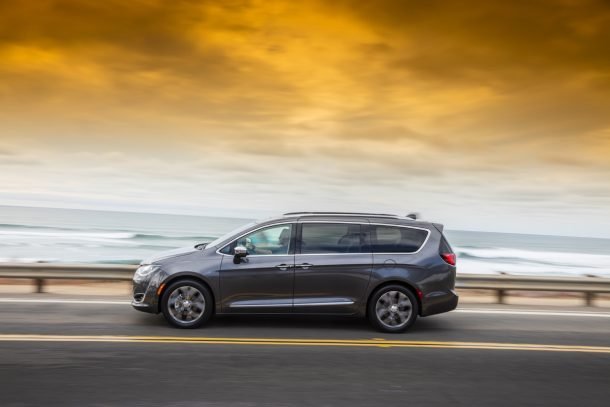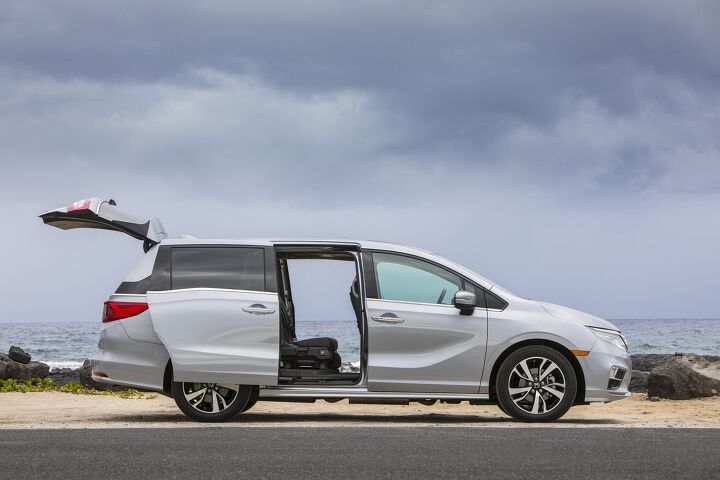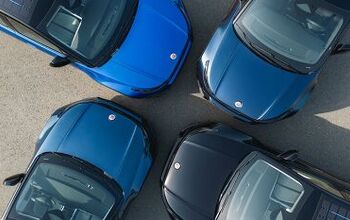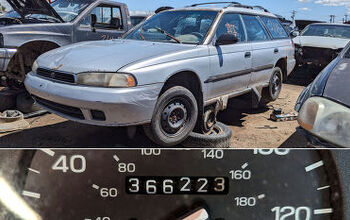America's Minivan Market Still Hasn't Reached the Bottom of the Barrel, But It's Nearly There
Let’s not kid ourselves. American demand for minivans is still shrinking. In fact, July sales in particular tumbled as three of the four top-selling minivan nameplates – a trio that accounts for nearly three-quarters of the sector’s volume – combined to lose more than 5,400 sales, year-over-year.
But set aside all of that negativity for just a moment and consider the segment in a more historical context. After more than a decade of collapsing demand, in which minivan volume plunged 54 percent between 2005 and 2015, the first seven months of 2018 reveal a hardy bunch of remaining stalwarts that have very nearly levelled off on an acceptable grade.
2018 is nevertheless on track to be the worst year for U.S. minivan volume since the recession. In this case, however, “worst” is beginning to sound like too strong of a word.
The days of 1,000,000 annual minivan sales are long gone, erased prior to the recession a decade ago. Now it also appears that the years in which the U.S. auto industry could reasonably count on more than half a million are also over, as the industry last attained that level in 2016.
Rewind to the days of 1M+ annual U.S. minivan sales and you’ll find a wide variety of nameplates long since deemed unfeasible. In 2005, General Motors, Ford, and Mazda, produced one-quarter of all van sales, but over time, each of those manufacturers surrendered their position in the market.
VanJuly 2018July 2017% Change20182017% ChangeDodge Grand Caravan7,2897,503-2.9%94,06787,3707.7%Chrysler Pacifica8,7758,2885.9%71,79967,8865.8%Honda Odyssey9,26910,134-8.5%60,52458,2903.8%Toyota Sienna6,75711,100-39.1%52,76167,258-21.6%Kia Sedona1,5671,710-8.4%11,95516,738-28.6%Chrysler Town & Country—26-100%5528-99.1%Nissan Quest—12-100%24,933-99.9%———————Total33,65738,773-13.2%291,113303,003-3.9%Yet the buyers that once existed for those extinct minivans did not quickly and automatically turn to the remaining nameplates. Accompanying the decrease of van nameplates was a commensurate decrease in the number of minivan buyers. In other words, the sector’s collapse – in which the van category’s share of the overall market slid from 6.5 percent in 2005 to 4.1 percent in 2010 to 2.9 percent in 2015 – didn’t turn every would-be buyer of a Mercury Monterey and Ford Freestar into an owner of a Dodge Grand Caravan or Honda Odyssey.
Fast forward to 2017. Minivan volume tumbles to the lowest level since the recession, sliding 12 percent, year-over-year. Every brand involved in the category reported fewer sales in 2017 than in 2016, including the retail-leading Honda, the ancient third-gen Toyota, and the transitioning Chrysler brand.
More than halfway through 2018, minivan volume continues to slide, but at a slower clip. Moreover, once defunct nameplates are excluded from the mix, minivan volume is down “only” 4 percent. Indeed, America’s three top-selling vans – Grand Caravan, Pacific, Odyssey – have actually exceeded last year’s seven-month pace by a 6-percent margin, adding a combined 1,800 sales per month.
To be fair, these aren’t signs of rude health for the category at large, not by the standards of ancient history. But after more than a decade of generally rapid decline, America’s minivan segment is now approaching the bottom of the valley. Outputs achieved by most of the remaining players, however, are relatively healthy.
Honda is on track to sell more than 100,000 Odysseys in 2018, Toyota will sell nearly 90,000 Siennas. Chrysler on Dodge are on track to add another 260,000 van sales. Kia’s 1,700 monthly Sedona sales aside, these aren’t the kinds of figures put up by inconsequential afterthoughts in a major automaker’s lineup. These are major players.
And they’ll continue to be, at least they will if we’re as close to the valley as the first seven months of 2018 would lead us to believe.
More by Timothy Cain
Latest Car Reviews
Read moreLatest Product Reviews
Read moreRecent Comments
- Lou_BC Well, I'd be impressed if this was in a ZR2. LOL
- Lou_BC This is my shocked face 😲 Hope formatting doesn't fook this up LOL
- Lou_BC Junior? Would that be a Beta Romeo?
- Lou_BC Gotta fix that formatting problem. What a pile of bullsh!t. Are longer posts costing TTAC money? FOOK
- Lou_BC 1.Honda: 6,334,825 vehicles potentially affected2.Ford: 6,152,6143.Kia America: 3,110,4474.Chrysler: 2,732,3985.General Motors: 2,021,0336.Nissan North America: 1,804,4437.Mercedes-Benz USA: 478,1738.Volkswagen Group of America: 453,7639.BMW of North America: 340,24910.Daimler Trucks North America: 261,959





































Comments
Join the conversation
I bought 2 2018 Nissan Quests,they're going to be worth a fortune!!! Seriously, though we'll be buying a 2018 Sienna AWD this next year. The Pacifica is intriguing but it's just too wide, I have discovered a 75 inch width is workable for downtown trips, tight parking lots and preventing door dings in our garage(actually the main reason).If they make an SUV with sliding doors I'd be all over it. We're last on the city plow route so I prefer AWD.I'd hold out for an AWD Hybrid Sienna, similar to what Toyota did with the Rav 4, but given the shrinking marketshare that's not gonna happen.
I recently bought a '18 Kia Sedona that was being used as a dealer loaner. I was able to buy it as a new vehicle with the full warranty at a sizable discount. I had been driving a F150 crew and haven't missed it since the trade. The van is much more comfortable for my teenagers and no one complains about riding in the back. We made a 2000 mile round trip to Colorado over the summer, and we all rode in style without anything tied to the roof or hanging off of the bumper. The damn thing is well appointed with a mid level trim coupled with some good option packages. The $20,000 Caravan was tempting but this offered a lot more comfort (especially in the 2nd and 3rd rows) and options for about $5000 more. I'd have spent $38-44K to get into a comparably spec Sienna or Odyssey whereas the Kia listed for $35K but I bought it for $26K. I am really pleased with the Sedona so far.